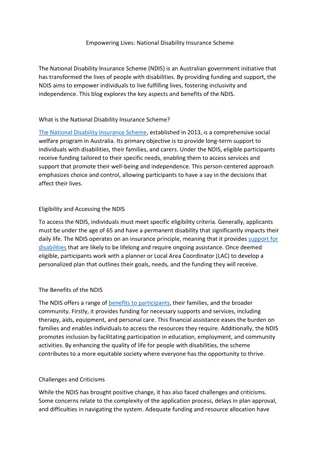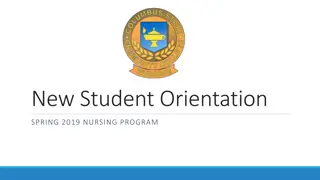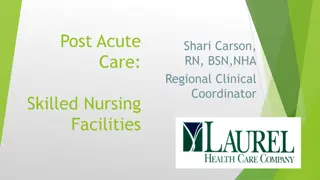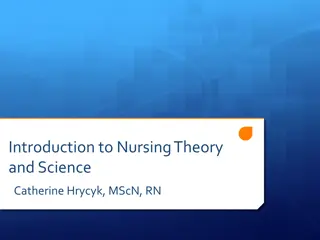ESSENTIAL ELEMENTS OF COMPREHENSIVE NURSING CARE
This detailed guide focuses on the essential elements of comprehensive nursing care, including clinical assessment, patient assessment documentation, goal planning, and risk assessment and diagnosis. The content emphasizes the importance of person-centered approaches, health literacy considerations, communication styles, and tailoring care plans to individual patient needs. Through thorough assessment and planning, healthcare professionals can provide high-quality, holistic care to optimize patient outcomes.
Download Presentation

Please find below an Image/Link to download the presentation.
The content on the website is provided AS IS for your information and personal use only. It may not be sold, licensed, or shared on other websites without obtaining consent from the author.If you encounter any issues during the download, it is possible that the publisher has removed the file from their server.
You are allowed to download the files provided on this website for personal or commercial use, subject to the condition that they are used lawfully. All files are the property of their respective owners.
The content on the website is provided AS IS for your information and personal use only. It may not be sold, licensed, or shared on other websites without obtaining consent from the author.
E N D
Presentation Transcript
ESSENTIAL ELEMENTS OF COMPREHENSIVE NURSING CARE July 2023
Clinical Assessment Key actions Use person-centred approaches to discuss current status and conditions Consider the patient s health literacy, and tailor your communication style Apply clinical reasoning to reach conclusions about nursing care Use the provisional diagnoses and assessment to inform care Include the results of the clinical assessment and interventions in the comprehensive care plan.
Document the Patient Assessment Assessment Gather subjective & objective patient baseline data Complete in EMR: Basic Admission Assessment Adult Initial Patient Assessment
Goal Planning Key actions Use person-centred approaches to discuss patient goals of care Consider the patient s health literacy, and tailor your communication style Use the about me form to understand key items of importance for our patients/consumers Identify who the patient/consumer wants involved in discussions, interventions and goal planning Use the patient goals to inform the comprehensive care plan (IPOC) Document and communicate the patient goals discussion.
Risk Assessment & Diagnosis Key actions Discuss personal factors with patients that might contribute to risk of harm Use risk assessment approaches to mitigate risks and improve patient care Use clinical judgement to inform decisions about potential risks of harm, and actions to mitigate risk Document and communicate the risk assessment processes and actions in the comprehensive care plan. Conduct a comprehensive risk assessment Identify additional risk factors such as: - Agitation or impaired judgement - Communication issues - Requiring End of Life Care - Frequency or need for assisted toileting - Previous falls - Prescription drugs - Older age/ frailty / reduced mobility - Underlying chronic disease - Delirium / confusion - Pressure Injury - Nutrition - Continence - Falls - OVA - Self-harm and suicide
Document Risk Assessment & Nursing Diagnosis Identify Risk & Nursing Diagnosis Risk assessment & diagnosis Actual diagnosis Complete in EMR: Adult Risk Assessment Nursing Admission Note 2 1
Develop a Comprehensive Care Plan (IPOC) Key actions Use interventions and risk mitigation strategies to improve patient outcomes Engage with the multidisciplinary team and communicate effectively to plan the patient s care Include patients, family, carers and support people in comprehensive care planning and alignment with patient goals of care Ensure information in the comprehensive care plan is current, accurate, relevant and succinct. Minimum Strategies - Safety Check every shift - Head to Toe skin assessment every shift - Falls assessment every day - Monitor for changes in behaviour /Cognition every shift - Encourage mobility as appropriate e.g. sit out of bed, change into day clothes - Regular repositioning if reduced mobility Develop an Individualised, comprehensive plan - Goals of treatment consistent with patient s values - Specific nursing interventions - Allied health interventions as required - Clinical Observations and frequency of monitoring - Specialist assistance as required
Document the Comprehensive Care Plan (IPOC) Care Planning Establish goals of care with the patient Select interventions to achieve the goals Add how often the intervention is planned Complete in EMR: Orders, Suggested Plans, Comprehensive Care IPOC 2 1
Document Patient Goals and intended outcomes in the (IPOC)
Document Planned Interventions in the (IPOC)
Deliver Comprehensive Care Key actions Deliver person-centred care that is appropriate for the patient Work collaboratively in a multidisciplinary team to achieve the patient s goals Care for the patient in a dynamic and individualised way, Involve family, carers and support people in in alignment with patient wishes Assess cognition and screen for delirium every shift - Manage continence, such as toilet frequently - Implement fall injury prevention strategies where indicated. - Ensure consistent communication between care providers. - Provide a call bell to patients to contact nurses for assistance. - Protocol in place to address extra precautions needed for patients with cognitive impairment. - Implement skin protection strategies Head to Toe skin assessment every shift - Patient and family input where feasible - Identify and treat reversible causes of incontinence - Assistance for patients who wear hearing and visual aids - Correct dehydration, malnutrition and constipation - Regular pain assessment and management -Regular reorientation and reassurance -Help with feeding, oral supplements and/or nutrition support - Regular repositioning
Document Nursing Interventions Nursing Care Delivery Direct Care Complete in EMR Care Compass, iView Activities & Interventions Nursing Shift Progress Note 3 1 2
Review Comprehensive Care Key actions Review comprehensive care delivery with the patient Be responsive and alert to changes in the patient s circumstances Work collaboratively with the multidisciplinary team to review and communicate changes in the patient s circumstances Involve family, carers and support people in alignment with patient s wishes. Monitor the effectiveness of fall prevention strategies, and reassess if fall occurs - Monitor the effectiveness of delirium prevention strategies, and reassess if delirium occurs - Monitor the effectiveness of malnutrition prevention strategies and reassess if malnutrition occurs - Monitor the effectiveness of incontinence prevention strategies and reassess if persistent incontinence occurs - Put referrals in place to address deconditioning - Review regarding resolution of delirium or the emergency of ongoing cognitive impairment - Shift by shift pressure injury risk assessment, at least weekly pressure injury healing assessment - Provide information for patient and GP upon discharge
Review the care plan (IPOC) Evaluation If the problem is resolving as planned Complete in EMR: 1 Document in Plan - Review and tick if todays goals were achieved, in progress or not achieved 3 2 4
Review the care plan (IPOC) Evaluation If the problem is not resolved - reassess the cause and modify the interventions Complete in EMR: Go to Orders & referrals Right click the goal / intervention and select modify to update frequency/ timing. Add a Nursing Shift Progress Note 1 2 3 4
Review the care plan (IPOC) Evaluation If the problem is not resolved and you need to add Goals / interventions Complete in EMR: 1 Document in Plan to Review Add to phase to add additional goals/ interventions Add a Nursing Shift Progress Note 3 2
Clinical Assessment Gathering subjective & objective patient baseline data Evaluation Confirm the problem is resolved If the problem is not resolved reassess the cause of the problem and change the interventions Identify Patient Goals With the Patient Complete in EMR: Basic Admission Assessment Adult Initial Patient Assessment Complete in EMR: IPOC Intended outcomes Complete in EMR: Document in IPOC Nursing Progress Shift Note Essential Elements of Comprehensive Care Risk Assessment Diagnosis Risk Assessment Actual Diagnosis Care Delivery Direct Care Complete in EMR: Care Compass, iView Activities & Interventions Care Planning Select Interventions to achieve the goals Complete in EMR: Complete in EMR: Adult Risk Assessment Orders, Suggested Plans Comprehensive Care IPOC
References 1. https://www.safetyandquality.gov.au/publications-and-resources/resource-library/implementing-comprehensive-care- standard-deliver-comprehensive-care 2. https://www.safetyandquality.gov.au/publications-and-resources/resource-library/comprehensive-care-element-1-clinical- assessment-and-diagnosis-key-actions-clinicians 3. https://www.safetyandquality.gov.au/publications-and-resources/resource-library/comprehensive-care-element-2-identifying- goals-care-tips-clinicians 4. https://www.safetyandquality.gov.au/publications-and-resources/resource-library/comprehensive-care-element-3-risk- screening-and-assessment-key-actions-clinicians 5. https://www.safetyandquality.gov.au/publications-and-resources/resource-library/comprehensive-care-element-4-develop- single-comprehensive-care-plan-key-actions-clinicians 6. https://www.safetyandquality.gov.au/publications-and-resources/resource-library/comprehensive-care-element-5-deliver- comprehensive-care-key-actions-clinicians 7. https://www.safetyandquality.gov.au/publications-and-resources/resource-library/comprehensive-care-element-6-review-and- improve-comprehensive-care-delivery-key-actions-clinicians 8. https://www.safetyandquality.gov.au/publications-and-resources/resource-library/components-comprehensive-care-plan- information-clinicians 9. https://www.safetyandquality.gov.au/publications-and-resources/resource-library/comprehensive-care-delivery-overview- clinicians
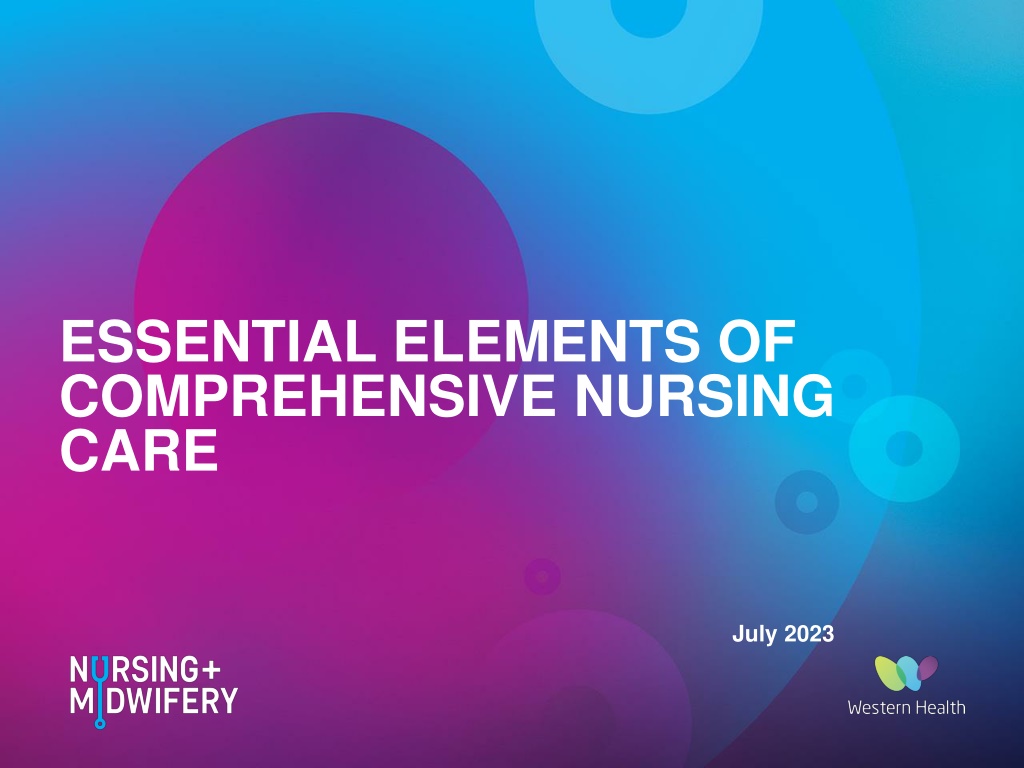
 undefined
undefined










